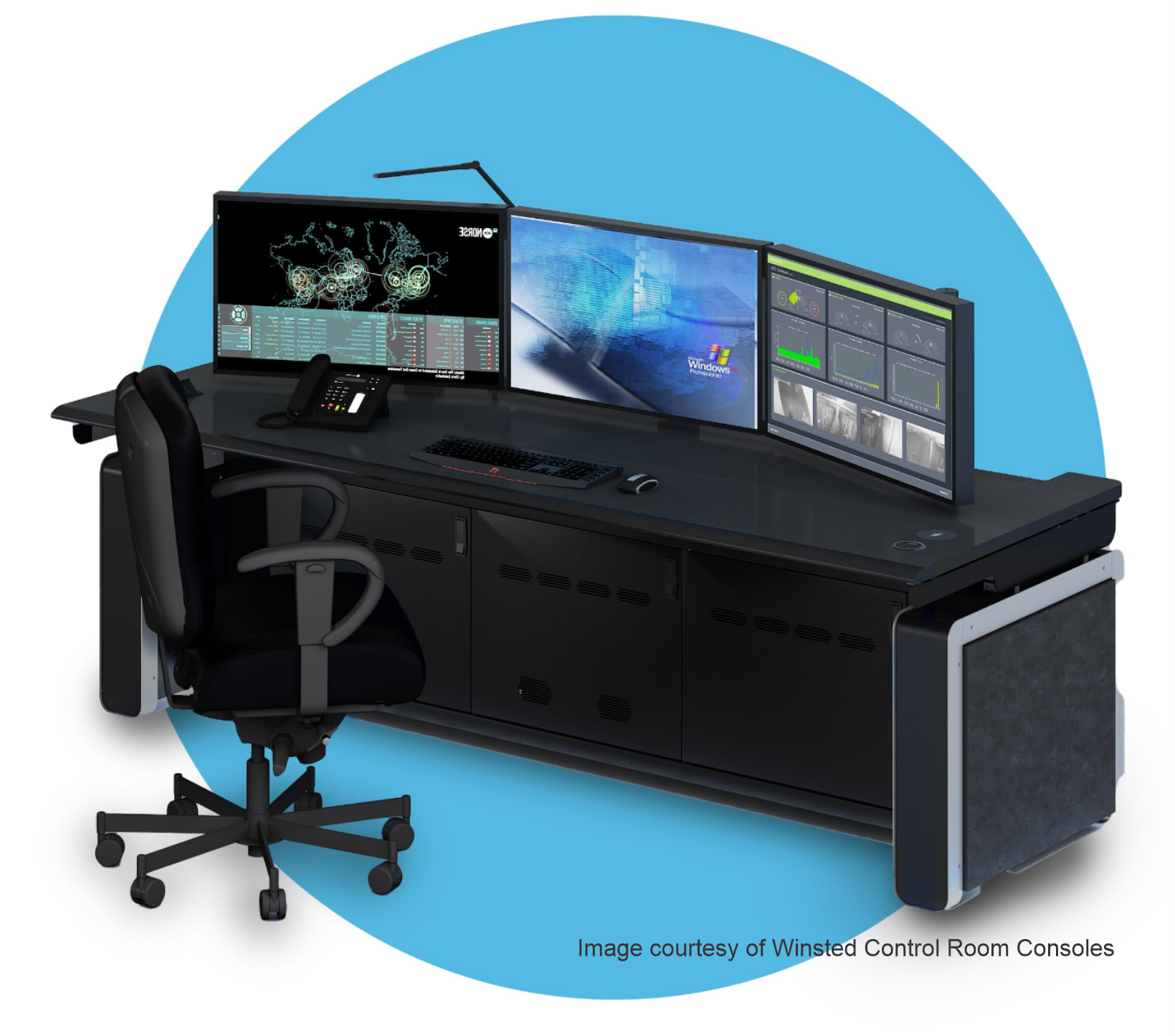3 min read
Optimizing Security Operations in Healthcare Facilities with Appropriate Technology
![]() Theseus Team
:
Jul 18, 2024 2:21:08 PM
Theseus Team
:
Jul 18, 2024 2:21:08 PM

Security operations play a crucial role in maintaining the safety and security of healthcare facilities. These operations not only act as a visible deterrent to potential threats but also provide a rapid response force when incidents occur. Leveraging advanced technology can significantly streamline these operations, enhancing efficiency and effectiveness.
Here are some key considerations for deploying better solutions for central station or security operations center (SOC) staff to ensure optimal situational awareness and response:
Advanced Camera Technology
Deploying the right camera technology is essential for providing comprehensive situational awareness. Consider incorporating the following types of cameras:
- Multi-Imager Cameras: These cameras offer multiple views from a single device, providing broad coverage of large areas like intersecting hallways without the need for numerous individual cameras.
- Panoramic Cameras: These cameras deliver a 360-degree view, ideal for monitoring expansive spaces such as lobbies, waiting areas, and large corridors.
- PTZ (Pan-Tilt-Zoom) Cameras: PTZ cameras can be remotely controlled to focus on specific areas of interest, providing detailed views and the ability to track movement in real-time. Integration can enable PTZ cameras to react to fixed camera analytics alerts, allowing for greater situational awareness.
These camera technologies reduce the need for unnecessary responses by providing security operators with a clear, comprehensive view of the facility, allowing them to quickly assess situations and respond appropriately.
Dynamic Guard Tours
Implementing dynamic guard tours that vary in timing and routes can be an effective deterrent against criminal activity. By avoiding predictable patterns, security personnel make it more challenging for potential criminals to anticipate their movements. This strategy ensures comprehensive coverage of the facility while maintaining an element of unpredictability that enhances overall security.
Pro tip: have you thought about using drones for these tours and automated alarm response for outdoor incidents?
Emergency Call Boxes
Emergency call boxes are vital for ensuring immediate communication between individuals in need and the security operations team. Placing these call boxes in garages, parking lots, and walkways provides easy access to assistance. Modern intercom stations often include integrated cameras, allowing security personnel to visually identify and assess the situation of the individual seeking help, thereby improving response accuracy.
Video Analytics
Video analytics offer powerful tools for both real-time monitoring and post-incident investigations. These analytics can:
- Search Recorded Video: Quickly locate specific behaviors or incidents that may not have been initially apparent, significantly speeding up investigation times.
- Detect Unauthorized Behavior: Monitor live feeds for unauthorized activities, triggering automatic alerts for immediate response even when security operators cannot watch every camera continuously.
Duress Alarms
Duress alarms are critical for ensuring the safety of healthcare staff. These alarms should be strategically placed throughout the facility, including in high-risk areas such as emergency departments, psychiatric units, and administrative offices. When a duress alarm is activated, it immediately alerts the security team, who can then assess the situation via integrated cameras and determine the appropriate response. The combination of duress alarms and camera surveillance enhances the overall safety and security of healthcare workers.
Command Center Operations
A well-equipped command center is essential for maintaining situational awareness and coordinating responses. Key components of an effective command center include:
- Video Wall: Allows for simultaneous monitoring of multiple camera feeds, providing a comprehensive view of the facility.
- Radio Dispatch: Ensures efficient communication and coordination among security personnel.
- Alarm Monitoring: Provides real-time alerts for various security events, enabling swift action.
Effective Security Procedures
Having well-defined and practiced security procedures is paramount. These procedures should cover:
- Incident Response Protocols: Clear guidelines for handling various types of incidents, ensuring consistent and effective responses.
- Regular Training: Ongoing training programs for security personnel to keep them updated on the latest technologies, procedures, and best practices.
- Collaborative Drills: Regular drills involving security staff and other departments to ensure seamless coordination during actual emergencies.
By integrating advanced technologies and implementing dynamic strategies, healthcare facilities can significantly enhance their security operations. These measures not only protect patients, staff, and visitors but also create a safer, more secure environment conducive to delivering high-quality healthcare services.
Contact us to get started with improving safety and security at your facility.
CASE STUDIES ABOUT OUR CONSULTING SERVICES FOR HEALTHCARE
 DOWNLOAD OUR HEALTHCARE FACILITY AND HOSPITAL CAMPUS SECURITY AND SAFETY GUIDE
DOWNLOAD OUR HEALTHCARE FACILITY AND HOSPITAL CAMPUS SECURITY AND SAFETY GUIDE
As a security manager or administrator in a healthcare facility, understanding and addressing your distinct security needs is paramount. This guide focuses on the critical aspects you must consider to protect your patients, staff, and visitors. By examining the unique challenges faced by healthcare operators, we provide a comprehensive overview of the strategies and technologies essential for a robust physical security program. It is crucial to ensure compliance with HIPAA, Joint Commission, and IAHSS guidelines and regulations to maintain a secure and accessible environment.
Recent trends highlight a significant increase in violence within healthcare settings. According to the IAHSS Healthcare Crime Survey, simple assault rates have been rising alarmingly. The data indicates that from 2012 to 2019, assault rates were approximately 10 incidents per 100 beds. However, in the past three years, this rate has more than doubled. This statistic underscores the urgent need for enhanced security measures in healthcare facilities.




